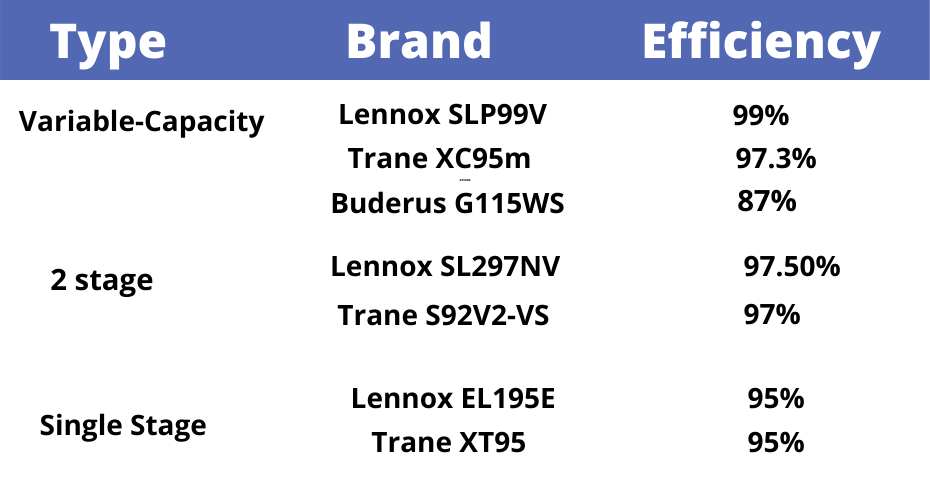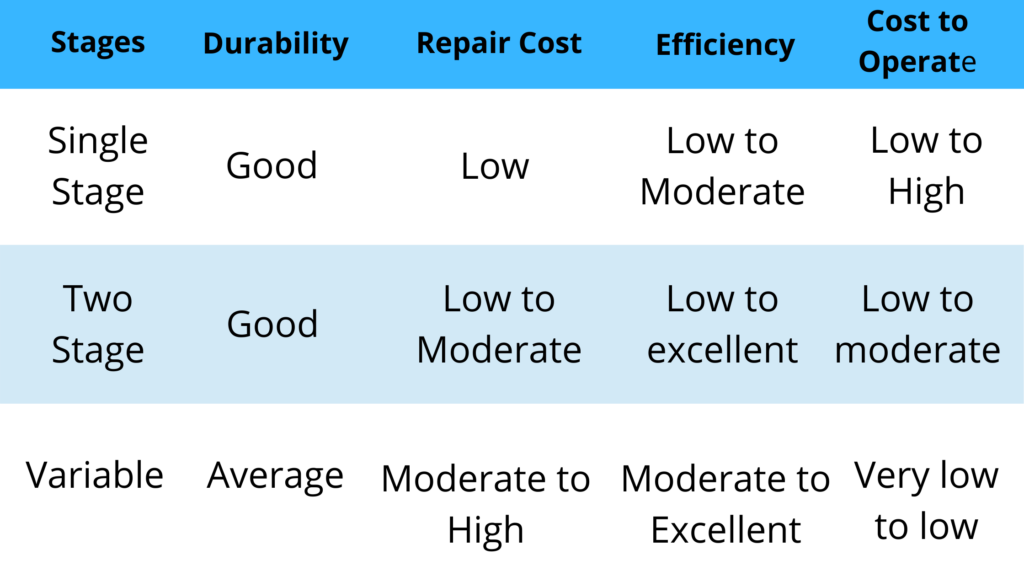Leonard Splaine Best Furnace for your home – Trane vs Buderus vs Lennox Furnace Review

Staying comfortable during the cold months starts with having the right heating solution for your home that runs smoothly and efficiently all season long and that’s why buying a new furnace can be a very daunting proposition. Although, there are a few main things that homeowners will want to take into consideration when deciding which furnace brand is best for their homes. While energy efficiency and price might be the most important at first glance, other factors such as the size of your house, your area’s climate, and local rebates also determine which model is the best fit for you. So whether you are considering upgrading your heating equipment, need a repair, or are looking for ways to help save on energy this winter, our guide will help to provide you with the information needed to make smart and informed decisions about your heating equipment. In our evaluation of furnace brands, Trane, Buderus, and Lennox make our Best Brands list for this year as they consistently outranked the rest in terms of efficiency, durability, and customer satisfaction.
While there are plenty of similarities between these brands, there are also distinct differences as well. But one very good similarity between these furnace brands is that they always provide more reliable performance over time and help you save on energy bills while keeping your house warm.
So here’s a quick roundup of some of the outstanding features of our top three best furnace brands on the market today:
1. Energy Efficiency
When you choose a highly efficient furnace, you know you’re making a smart choice because it can significantly reduce your monthly utility costs. Heating your home typically represents about 45% of your utility bill. That’s a lot! And, that’s why there is so much interest in high-efficiency furnaces and heating systems. When it comes to furnaces, “efficiency” refers to how effectively they can convert heating energy from a fuel source into warm, comfortable heat for your home. A high-efficiency gas furnace has AFUE ratings of 90% or higher, up to a maximum of 99% AFUE. AFUE stands for Annual Fuel Utilization Efficiency and is a measure of how much heat the furnace can pull from the fuel it consumes.
The Lennox SLP99V Variable-Capacity Gas Furnace is the most efficient furnace in the market today. It boasts an efficiency rating of up to 99%—that means it essentially converts every last bit of energy it uses into heating the home.

2. Heat Exchanger
Every furnace contains a heat exchanger. It’s an essential part of the heating process. To create heat, your furnace combusts fuel typically gas, but other varieties exist in a sealed chamber. This combustion process generates heat energy from the fuel source.
Essentially, the exchanger is a thin metal shield standing between the combustion chamber and the blower, which distributes heated air from the furnace through air ducts into the living spaces of your home. As the combustion chamber heats the exchanger, air is blown across its surface on the other side, rapidly heating the breathable air. This air is then sent through your home’s ductwork to the living spaces of your home.
Trane, Lennox and Buderus use similar heat exchangers. All their primary heat exchangers are made from aluminized steel.
3. Variable- Capacity Heating
These brands also specialize in making variable-capacity furnaces (also called modulating furnace). They have gas valves that modulate between about 40% and 100% capacity. A modulating 100,000 BTU furnace can operate at any heating level between 40,000 and 100,000 BTUs. These furnaces are more expensive but have a very high-efficiency rating. They run at the lowest capacity necessary to maintain balanced temperatures in your home. All have variable-speed blowers, which means there is rarely any cool air coming from the ducts or any change in temperature. They are also the quietest furnaces.
A common question for homeowners planning a new furnace is what’s the difference between single-stage, two-stage and variable-capacity furnaces?
Single-stage furnace:
Single-stage furnaces are the most basic and commonly installed type of furnaces. This type of furnace only has one setting. When on, your furnace operates at the maximum flame setting—there is no middle ground between the system being on or off.

This type of furnace often comes at a lower up-front cost but is not the most efficient option.
Two-stage furnace:
Two-stage furnaces have two different settings when your furnace is on, a high setting as well medium intensity setting to deliver a wider range of operation. This type of furnace can help to give you more temperature control in your home.
The furnaces are more expensive than the single stage options but are generally more energy efficient as there are different levels of heating available.
Variable-capacity furnace:
Modulating furnaces also called variable-capacity furnaces, they offer an advanced type of heating technology that delivers more even heating throughout your home. With a modulating furnace, the flame increases and decreases in finer increments to help maintain your home’s temperature. This reduces temperature fluctuations and helps meet your comfort needs more precisely.
Modulating furnaces are the most expensive to purchase upfront but will deliver consistent heating most efficiently.
The table below also shows some other differences:

If your goal is to reduce energy use and cost as much as possible, then upgrading to a trane and lennox variable-capacity furnace is worth the extra 20% to 33% cost.
4. Features.
Today’s modern furnaces operate safely and efficiently. While the cost of a new furnace may be high, you will definitely enjoy some technological features available in these brands that would substantially help in saving your energy bills and making it more efficient.
1. Variable-Speed Motor
A modern furnace with a variable-speed motor allows you to adjust the rate air is delivered when less heat is needed. A variable-speed motor adjusts the amount of heat delivered to your home, preventing overheating or underheating. This motor can run smoothly at low speeds, unlike a conventional blower, increasing your furnace’s efficiency and preventing hot and cold spots.
Paired with a programmable thermostat, a variable-speed motor allows your furnace to heat your home exactly the way you want it, keeping your family comfortable and your energy bills low.
2. Electronically commutated motors (ECM):
An Electronically Commuted Motor (ECM) is a motor technology in forced air heating applications that works to reduce the electrical consumption of the furnace motor. This technology can reduce your furnace’s electrical consumption by as much as 60% over a standard motor. These motors work with the furnace, adjusting speed to provide adequate airflow. Less electrical consumption results in a reduction of air noise in your home.
3. Ignition System
Modern furnaces come with electronic ignition, which is a technological advancement replacing the pilot light system. With electronic ignition, fuel is only used when it is time to start the furnace. In older technology, a pilot light would use a small amount of fuel continuously, resulting in additional energy consumption. The newer ignition systems increase efficiency that is reflected in a furnace’s higher AFUE rating.
4. Air Filtration
An electronic filter, which uses an electrical charge to help trap particles, or a high-efficiency particulate-arresting (HEPA) filter fitted in your furnace can reduce the amount of dust blown through the heating system. This can be particularly beneficial for people with asthma or other chronic lung diseases.
Intelligent digital electronics and Wi-Fi
New furnaces have a digital integrated control board that controls all the functions related to the heating/cooling operations in your home. It controls the gas valve, the igniter, the flame sensing circuit, and the blower fan. The control board also communicates with standard thermostats, smart learning thermostats, air conditioners, and humidifiers.
Choosing a Furnace Contractor
A furnace is an essential and pricey component of your home’s HVAC system. Therefore, ensuring correct furnace installation offers homeowners peace of mind. It’s no wonder they say that the installation process is just as important as the product you are installing. Some furnace brands like Trane, Lennox, and even Buderus go as far as selecting the contractors to install their products for their customers. They don’t allow any handyman or plumber to install their products.
So here’s a quick guide on what makes a good furnace contractor
- Good contractors properly assess your needs: A reputable contractor does not just take out the old furnace and put in a new, same size furnace without confirming if it is the right fit for you and your home. A professional HVAC team will take time with you and discuss your changing needs and preferences, advanced inefficiencies, the size of your home, insulation, and windows, sunlight exposure, and other home systems.
- Good contractors recommend the right configuration, size, and model for your situation: An incorrectly sized furnace may wear out more quickly and could be less efficient. Oversized furnaces turn off and on frequently, which may lead to higher operating costs and shorter equipment life. On the other hand, if the furnace is too small, it may not properly heat your home.
- Good contractors know what to ask about your comfort preferences: A professional team will know how to conduct a heat-loss calculation that results in accurate sizing of your system. They are also familiar with new technologies, leading brands, models, and add-ons. Some brands or models offer features that are just right for your home and changing needs.
Conclusion
When you contact us today from our website, You will receive our A+, licensed, and insured HVAC installers certified by Trane, Buderus and Lennox to install their equipment in your area. Our pricing and rates are fair and made with integrity.
